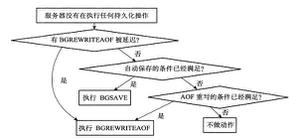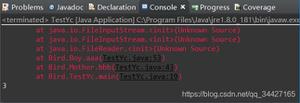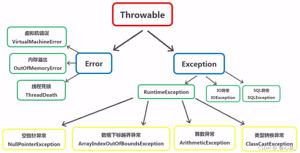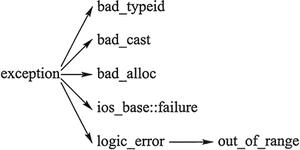Java7的try-with-resources声明

看《Effective Java》第三版的时候,看到了其中建议将try-finally替换为try-with-resources。这个语法糖还算有意思,特此成文。
用法辨析
Java库中有很多资源需要手动关闭,比如InputStream、OutputStream、java.sql.Connection等等。在此之前,通常是使用try-finally的方式关闭资源;Java7之后,推出了try-with-resources声明来替代之前的方式。 try-with-resources 声明要求其中定义的变量实现 AutoCloseable 接口,这样系统可以自动调用它们的close方法,从而替代了finally中关闭资源的功能。
举个栗子,下面是一个复制文件的方法,按照原本try-catch-finally的写法:
// 一个简单的复制文件方法。
public static void copy(String src, String dst) {
InputStream in = null;
OutputStream out = null;
try {
in = new FileInputStream(src);
out = new FileOutputStream(dst);
byte[] buff = new byte[1024];
int n;
while ((n = in.read(buff)) >= 0) {
out.write(buff, 0, n);
}
} catch (IOException e) {
e.printStackTrace();
} finally {
if (in != null) {
try {
in.close();
} catch (IOException e) {
e.printStackTrace();
}
}
if (out != null) {
try {
out.close();
} catch (IOException e) {
e.printStackTrace();
}
}
}
}
可以看出,这种实现非常的丑陋。
下面来看使用了try-with-resources后的效果:
public static void copy(String src, String dst) {
try (InputStream in = new FileInputStream(src);
OutputStream out = new FileOutputStream(dst)) {
byte[] buff = new byte[1024];
int n;
while ((n = in.read(buff)) >= 0) {
out.write(buff, 0, n);
}
} catch (IOException e) {
e.printStackTrace();
}
}
try-with-resources将会自动关闭try()中的资源,并且将先关闭后声明的资源。
如果不catch IOException就更加清爽了:
public static void copy(String src, String dst) throws IOException {
try (InputStream in = new FileInputStream(src);
OutputStream out = new FileOutputStream(dst)) {
byte[] buff = new byte[1024];
int n;
while ((n = in.read(buff)) >= 0) {
out.write(buff, 0, n);
}
}
}
原理分析
那么try-with-resources有什么神奇之处呢?到底做了什么呢?
我们先来看下AutoCloseable接口:
public interface AutoCloseable {
void close() throws Exception;
}
其中仅有一个close方法,实现AutoCloseable接口的类将在close方法中实现其关闭资源的功能。
而try-with-resources其实是个语法糖,它将在编译时编译成关闭资源的代码。我们将上述例子中的代码编译成class文件,再反编译回java文件,就能看到如下代码:
public static void copy(String var0, String var1) throws IOException {
FileInputStream var2 = new FileInputStream(var0);
Throwable var3 = null;
try {
FileOutputStream var4 = new FileOutputStream(var1);
Throwable var5 = null;
try {
byte[] var6 = new byte[1024];
int var7;
while((var7 = var2.read(var6)) >= 0) {
var4.write(var6, 0, var7);
}
} catch (Throwable var29) {
var5 = var29;
throw var29;
} finally {
if (var4 != null) {
if (var5 != null) {
try {
// 关闭FileOutputStream
var4.close();
} catch (Throwable var28) {
var5.addSuppressed(var28);
}
} else {
var4.close();
}
}
}
} catch (Throwable var31) {
var3 = var31;
throw var31;
} finally {
if (var2 != null) {
if (var3 != null) {
try {
// 关闭FileInputStream
var2.close();
} catch (Throwable var27) {
var3.addSuppressed(var27);
}
} else {
var2.close();
}
}
}
}
除却处理异常相关的代码,其实就是调用了资源的close方法。
不过不得不说这个语法糖挺甜,真香。
1人点赞
Android成长之路
作者:聪明叉
链接:https://www.jianshu.com/p/6adb6dbc4140
来源:简书
著作权归作者所有。商业转载请联系作者获得授权,非商业转载请注明出处。
以上是 Java7的try-with-resources声明 的全部内容, 来源链接: utcz.com/z/394443.html








